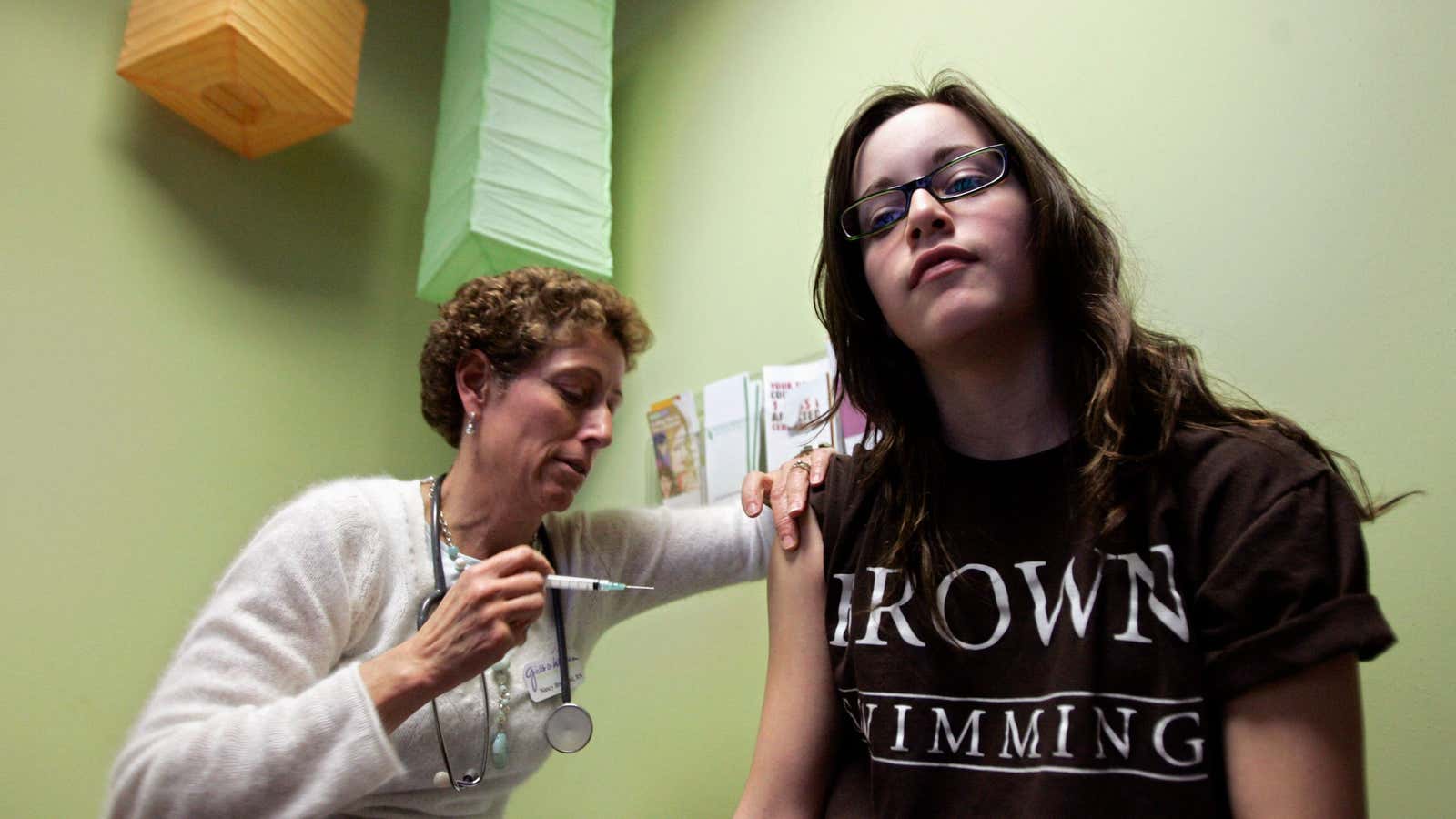Drugmaker Merck says it’s calculated exactly what it will take to eradicate the most pervasive sexually-transmitted infection—200 million yearly doses of a Merck vaccine.
During its earnings call on Feb. 1, the New Jersey-based company said it’s expecting to profit from efforts by public health officials around the world to eliminate the human papillomavirus (HPV) infection, which can cause genital warts, as well as cervical and other types of cancer.
Merck has a virtual monopoly on the HPV vaccine. The company’s version, Gardasil, is currently projected to bring the firm $5 billion in sales by 2025, though Wolfe Research says they could reach $7 billion. Those estimates simply account for the introduction of the vaccine in China, where it will be administered to millions of women.
There are many other low- and middle-income countries following China’s example. Bolivia, Guyana, Honduras, Rwanda, Sri Lanka and Uganda have introduced the vaccines in their national immunization protocols, and over 30 other countries have started pilot programs.
In the US, the Centers for Disease Control earlier this year raised the cutoff age for women getting the vaccine to 45 years, up from 26 before. This was excellent news for women aged 27 to 45 who have not yet been exposed to HPV, and for Merck.
Roger Perlmutter, the president of Merck Research Laboratories, suggested during the company’s earnings call it would take at least 200 million doses of the vaccine a year to cover worldwide demand. “Public health authorities around the world are thinking much more seriously about actually eliminating HPV infection as a source of human disease,” he said. ”That’s an enormous opportunity to do a lot of good, and of course a huge opportunity for the company.”
Since it was first introduced in 2006, vaccination against HPV has had tremendous success in cutting down infections from up to nine strands of the HPV virus, which the US’s National Cancer Institute links to 70% of cervical cancers. After the introduction of the vaccine in the US, HPV infections were halved, and the rate of invasive cervical cancer is expected to drop dramatically as the first cohort of vaccinated women reaches the typical detection age, between 35 and 44.
Gardasil was the first vaccine to be approved for HPV and it covers a larger spectrum of strands. Its only competitor, GlaxoSmithKline’s Cervarix, covers fewer strands of the virus and has a very small market share. It’s been pulled from the US and Australian market for lack of traction.
